Back to everyone’s favourite set of chats on WineFolio… A catch up we had a while back (pre-Covid-19 Lockdown) with two of the talents at Maude Wines in Wanaka.
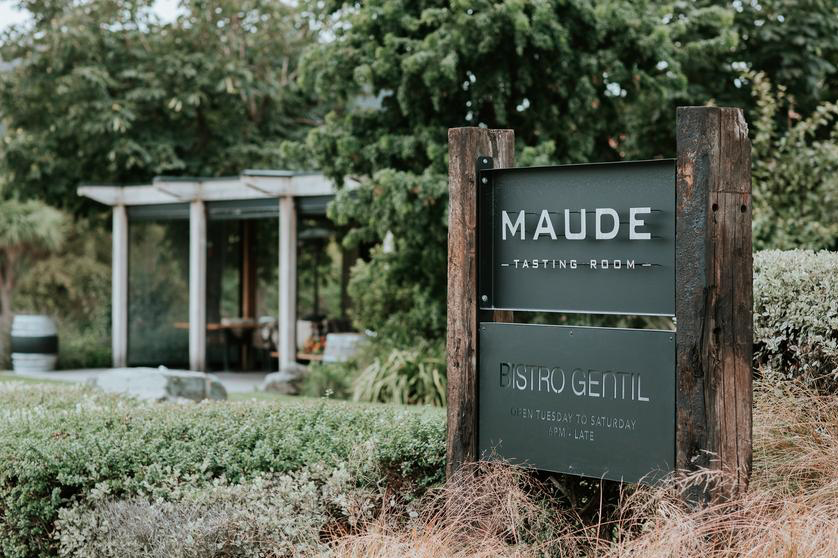
It’s a beautiful summer day and I’m running late – after a fantastic trip around three of the nicest places in the area, meeting wonderful people… I’m racing over to the Maude Tasting room, to taste a couple of the wines I’ve travelled down from Auckland to try. A lot of people say “hmmm, not tried it” when I tell them that the top 10 NZ Chardonnay list (that lives in my head) contains a Central Otago version at no.4. I’m also a devotee of their Mt Maude Pinot Noir – this is a step above the wine that won “Wine of the Year” at the 2018 New Zealand Wine of the Year Awards – that’s the Maude Pinot Noir (2017 version) – so paint a picture of how good that is in your own head (mine’s full of lists of top NZ wines…)
I start off talking to Vanessa (Nessy), one of the winemakers that isn’t Dan and Sarah-Kate Dineen, about the white wines, and the company in general.
WineFolio: Before we start – although I love the wines, I don’t really know all that much about Maude itself – can you fill me in?
Vanessa: The Mt Maude vineyard is about 10kms from here at the Tasting Room, on the way to Hawea as if you’re heading to the West Coast, in the Maungawera Valley. We’re the only vineyard down there. It was planted by Dawn and Terry in 1994. So quite old vines for this region – the second wave of planting.
It’s only four hectares and it’s got four varieties on it as well – so quite small production.
SK and Dan are the owners now – they met in the Hunter Valley, and SK is Dawn and Terry’s daughter. Very much a family run winery – for example, the Cellar hand is their nephew. Dan’s Mum does the Admin, his Dad is in the Vineyard. SK and Dan moved back here in 2005 and built the winery – and started the Maude label. Two years ago, Sarah Kate’s sister purchased this property, and we set up the Tasting room during the day, and then it is Bistro Gentil at night.
WF: I adore your Chardonnay, but I’ve not had your other whites much?
Vanessa: The dry Riesling – we make it like that because the fruit in the vineyard shows more austerity, lemon and lime, and lovely slatey characters. The East Block Riesling, just on the other side of the homestead, is made into a more off-dry Germanic style. In the vineyard it shows riper characters; citrus but apple, mandarin and it ripens slightly earlier. The dry is all whole bunch pressed, slightly oxidative handling – we let half the juice tray go brown and then add sulphur, just to try and oxidise out some of the phenolics and give a bit more longevity to the wine. Free run to stainless steel tank for a nice clean innoculated ferment, and stopping it when we think it’s in balance. The East Block we foot stomp – we tip it into bins and we all jump in and stomp around on the fruit. We don’t give any extended skin contact – just stomped around and into the press. Sulphur all the way – nice green juice, into stainless steel tanks. And then we’re just tasting daily.
We’re quite lucky with Mt Maude as we get really natural high acidities in the Riesling, so we’re normally sitting at around 2.9pH and 9-10 TA, trying to balance out that acidity really. It depends on the year – the dry usually ranges between 4-7 grams, and the East Block ranges between 30 and we’ve gone up to 60. This one is 48. I love Riesling because it’s very precise. You can see a lot through a Riesling.
WF: Do you think winemaking is scientific or creative?
Vanessa: I think it’s both. I think you have to have a good scientific knowledge to be able to make good wine, definitely. So you understand the sulphur, the pH and the microbiology behind it all. But then you’ve got to have a passion and it’s definitely an art. I really love Vintage – it’s exciting. Mt Maude is small enough that we normally just do one pick, but we do get fruit from vineyards throughout Central Otago that we either lease, or that we get fruit from every year. SK and Dan are out there every day and enough to know what the fruit’s going to be like before it comes in and how we’ll handle it.
This the last of the 2018 Pinot Gris. We ferment about 40% in old barriques to try and get a bit of texture and weight on the palate We do a little bit of lees stirring to try and get a bit of extra weight as well. And the rest of it is done in stainless steel to keep the aromatics, purity and freshness. We don’t want it too over the top, we’re after a nice balance. It’s a long picking – we start in Lowburn that can be the beginning of April, and don’t finish until mid-May in Gibbston Valley. The more delicate aromatics can stay in tank and the more robust ones from Lowburn tend to go in the barrels. Gorgeous aromatics and florals from Mt Maude and Gibbston Valley – it’s a great thing to blend together. We can tell which is going to be our aromatic portions and which will be our barrel portions beforehand. Some of it is whole bunch, and a bit of this is foot stomped as well.
WF: Why do you do foot stomping – I know it’s to break the skins and let the juice sit with the skins.. but why do that specifically?
Vanessa: I think we, in the early days, would crush them and keep them overnight; and we made them full of flavour and phenolics, but they fell over after three years. So we swung over to whole bunch pressing, but just didn’t quite have enough. Weirdly enough sometimes the flavour comes in earlier – up the hill. We thought with a bit of foot stomping… we hand pick, let it go cold overnight, and then early in the morning spread it between the picking bins and everyone stomps it for about an hour – just about enough to get some flavour.
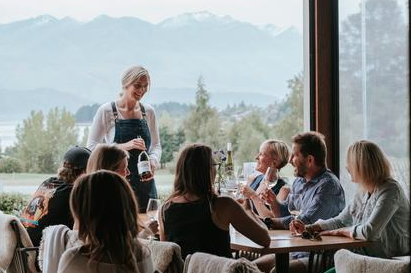
We do two Chardonnays – the Maude Chardonnay is our 2019 and comes from around the Cromwell basin – Bannockburn, Lowburn, and a bit from Gibbston. Not a lot of new oak but barrel fermented, in 400 litre puncheons. We think you get a better oak quality and it’s a really good size. Whole bunch pressed, all wild ferment, full malo, and lees stirring until we think it looks right, and then it’s sulphured – until then it’s seen no sulphur at all. The lees stirring is just enough to reduce the butteriness, and until we all agree that the sample is right.
Nessy has to run off to another blending session, and Dan takes over to run through the Pinots, and a ramble through more of the ethos behind Maude, and the Mt Maude vineyard.
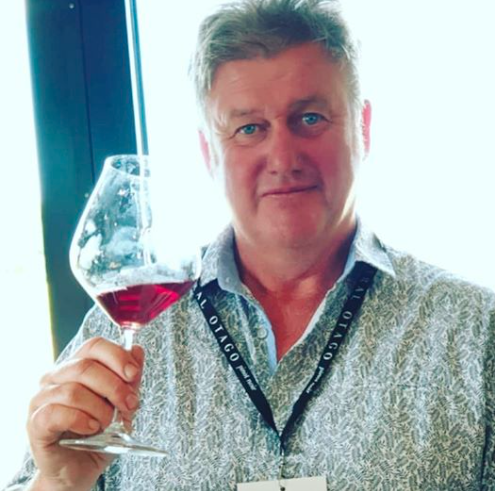
Dan: We’re blending all our ’19 Pinots at the moment, and one of the people that make for, is Two Degrees in Queensberry which we’ve made since ’07. Their vineyard is 6 hectares and then another 4 hectares, and they make so much, then the rest comes to us. It’s quite nice because we don’t feel like we’re stealing from them, and they don’t feel like we’ll pick the eyes out of the vineyard for us. They just make 800 cases a year and we’ve actually won three trophies with them in ’09, ’14 and ’16. We did the motherblend and we’re disputing on two barrels going in and out, so that’s what we’re doing next!
Mt Maude Chardonnay is 26 year old vines, dry grown and it’s quite high up in the hill, about 380m. Kids Block is at the end, at 400. There’s no big mountain behind it and when you’re working it, it feels hotter up there. The Mangawera is running East-West and the Norwesters go straight over the top of us; really sheltered.
The Maude Pinot Noir 2017 won “Wine of the Year” at the Air NZ show, and it’s been really good on a marketing front. It’s like ‘Car of the Year’ or whatever – people do notice. It’s worked really well for us. For 2018 we were a full month early – ridiculous. So the Pinots are a lot more approachable – there was no qualms about releasing it a few months earlier – once the ’17 had walked out the door! 2019 we’re back into normal Central territory again. We call it the Motherblend. We’ve done two blending sessions now, and it just grows until it’s the Maude. This ’19 has a lovely perfume. In the old days, it was that your Reserve wine had to be 40% new oak – sometimes 100% new oak. Hopefully we’re going away from that mentality.
WF: Do you prefer the cooler years?
Dan: In Wanaka, the leaves change and you’re picking at the end of April. Feels like you’ve done a full season – tannins are ripe, just feels right. We go into that lovely 15 degrees during the day, 5 at night… the sugars slow right up. It’s not like “ooh 26 brix, quick get it off”
WF: I’ve taken this step into writing specifically about New Zealand wines, partly because I think it’s a really exciting time for it. If there was nothing much really happening, I think I would have just stuck to Tourism. But I do think we’ve got a lot to say. I think Central Pinot is essential to that story – it’s come of age…the style of the wine – the story of the wine, the labelling, the vine age – it’s all coming into it’s own.
Dan: On the first day at the Pinot Celebration, Nigel Greening and I were talking, and reckon the vine age makes a big difference. And now – sites are becoming more important.
WF: Are you moving towards Organics or Biodynamics?
Dan: What holds us back at Mt Maude is the slope – it’s 40 degrees, and it’s terraced. So we can’t cultivate it. Everyone will get there, we just have to figure out how to do it, for us. We’re still trying to make the best wine possible – so quality is over that at the moment. At Mt Maude when we pull the weeds out, you can see the worms, and I think that’s a good indication of the soil health. As you go down deeper there is some clay and the roots go down and find that; so that’s why we can get away with being un-irrigated. Being Wanaka, we get the West Coast spill over – when it rains on the West Coast it comes down the lake a bit. So we get 600mm here, compared to 400 at Bannockburn. And we get it pretty evenly so it’s almost two inches a month. That’s probably why there’s more trees around here than at the moonscape of Bannockburn!

WF: I’m really thrilled with your new labelling – it’s so cool. You’re going to take over the world with this stuff.
Dan: These are the blends we’re still working on – That’s Mohawk Hill. That’s the Lowburn one. When we start blending Maude – these vineyards are so different but they are only 15 minutes apart. This is out warmest site and it sits in the lee of SugarLoaf. And from when they were building the dam, it’s still got a single strip of trees down it – and we look at it – hence the Mohawk.. The vineyard has soil, because the soil would have been blown down and settled there.
It’s got soil, so it can seriously ripen and it probably makes your typical Central fruit bomb. Sweet mid-palate, there’s a lot of Clone 5 planted there, so it’s warm and inviting with a mocha, chocolate too. We’ve always blended it with Queensberry which is fifteen minutes up towards Wanaka, and 80 metres above it, in elevation, and we pick it ten days later. That’s more linear structure – completely different aromatics, more blue fruits. Pisa fruit always has this lift of Aniseed I reckon. Queensberry is Poison Creek – lighter in structure.
And when you blend them it’s almost like putting a corset on the big fruit one. It pushes the middle in, and pushes it out the back. It’s a great blend and it’s why we so enjoy blending Maude. Structurally, putting it together is such fun. There’s three of us – three winemakers. We’ve got to walk away sometimes – just say, “we’ll re-convene next week”, when everyone’s calmed down! It’s really nice blending with three people. You have your choice, and you argue to hell about it, and then your blend goes up and it all gets mixed up. And in a big line-up you’re not looking for yours, but you’ve still got to say ‘right, that’s the best one’ and you’re hoping it’s yours!
Mt Maude Reserve is 70% whole bunch. We have to trim it by hand, with battery powered trimmers, because it’s so steep, and we can’t get a trimmer in like a normal vineyard. It’s all up and over, working like that all day… heck.
Kid’s Block is right at the top and there’s six rows of it. At the time, Sarah-Kate’s Mum and Dad had six grandkids, so it was always called Kid’s Block and we kept the name. They are Dijon clones, all at the top. And we’ve just in the last few years switched that over to dry grown too. It’s not on its own roots, it’s actually on rootstock, but just coming of age now. We don’t do a whole lot of whole bunch with it. It’s a bit more traditional.
East Meets West – as the vineyard comes around the hill, the reserve wine comes from the middle. The west side, the roots have grown down and found a bit more water, so are a bit more vigorous. Historically they’ve never gone into the reserve. East side cops all the morning light and not much of the afternoon. Those two parcels just used to just go into the Maude, but they’re 26 year old dry-grown Pinot vines.
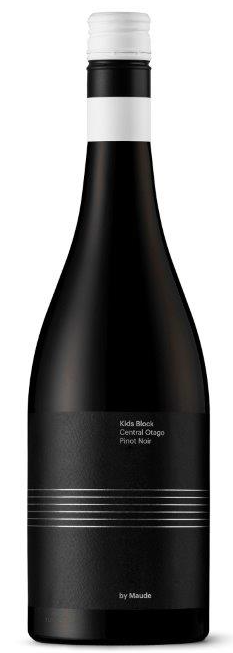
We put them together and we make it in a maceration style – start a fermentation in the bottom of our four-tonne fermenters. So all the hand-picked whole bunch fruit goes in, put the lid on, tape it up and walk away for three weeks. And the inter-cellular fermentation happens. At the end of three weeks – lid off – and our ten year olds get their mates and they come and stomp it. Press it off, into barrel and off to the warm room, because it’s still got sugar in. So it’s a ferment Beaujolais style – but it’s the biggest Beaujolais you’ve ever seen. It’s a very polarising wine – people either love it or they hate it. As a young wine it’s full of Turkish delight, bizarre aromatics that are so different. You’ve got 100% stalks in there, so that’s on the tannins… when we do the Maude, which is 200-odd barrels, we always do a couple of fermenters of this, and our next step for that Maude blend is to start to layer some of that in.
WF: What made you think to make it that way?
Dan: We’ve always made, for an Australian company called Innocent Bystander – their Central Otago Pinot that only really gets sold in America. They’ve sold that brand on to Brown Brothers in Australia, but the winemaker, Steve Flamsteed, who won Winemaker of the Year a couple of years ago, has gone back to just their main brand which is Giant Steps in the Yarra.
He would always come over, and when the brand was sold he said “I still want to make wine with you guys” so we got him a parcel that he could put under the Giant Steps label.
This is very much inspired by his techniques.

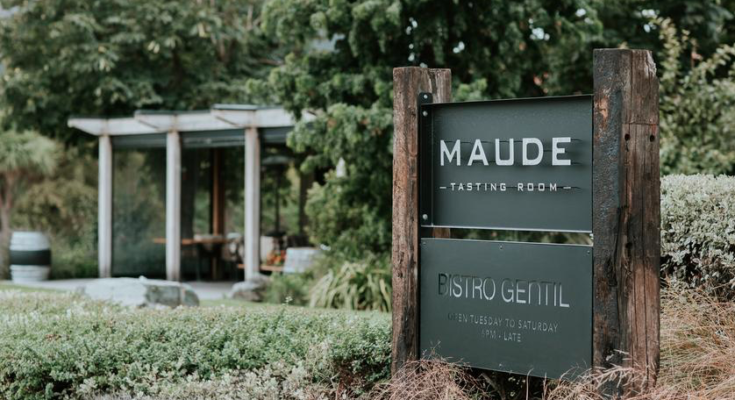
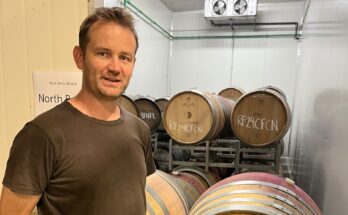


One Comment on “Winemaker Series: Maude – Nessy & Dan”